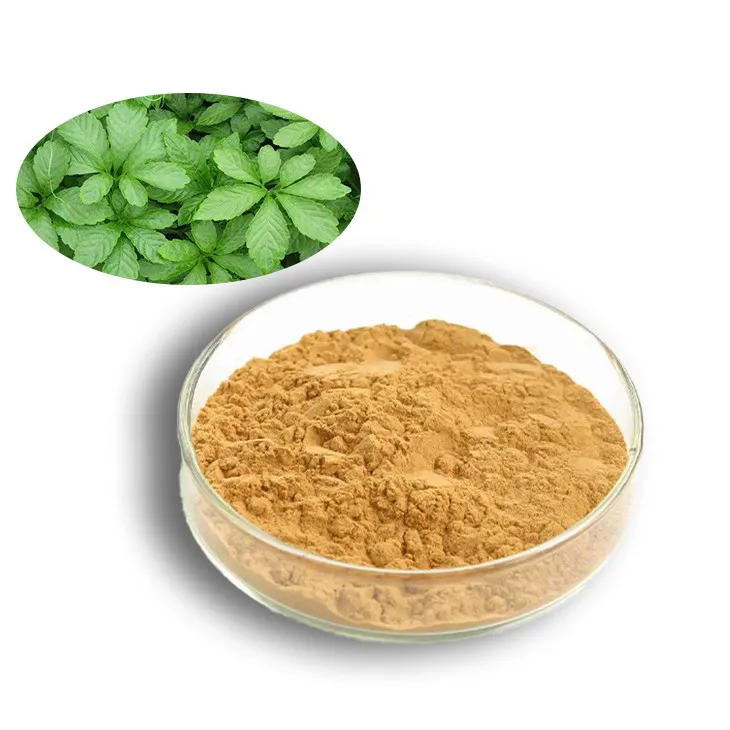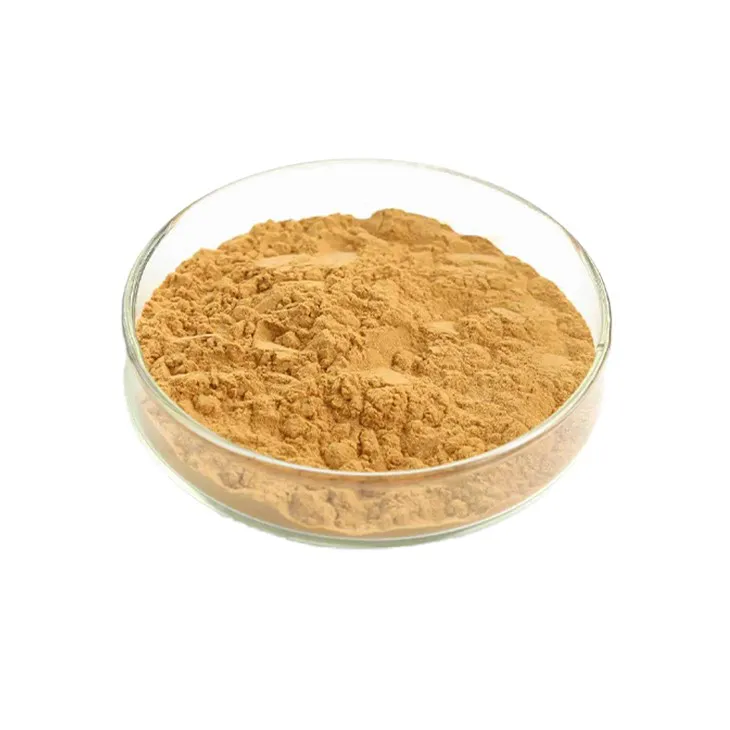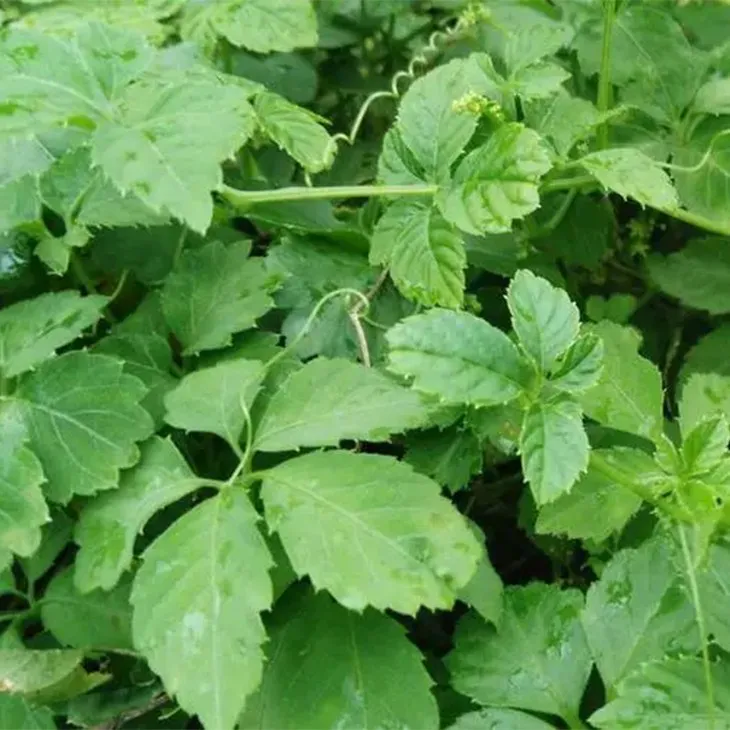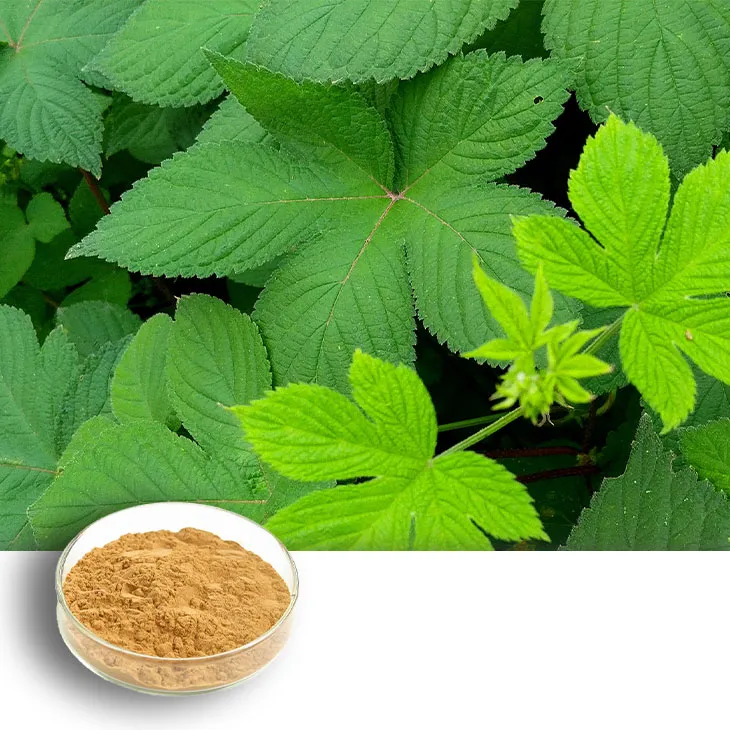- 0086-571-85302990
- sales@greenskybio.com
Components of Gynostemma pentaphyllum extract in fertilizers and feeds.
2024-11-29

1. Introduction
Gynostemma pentaphyllum, a traditional Chinese medicinal plant, has been increasingly explored for its potential applications in various fields. In recent years, its extract has drawn particular attention in the areas of fertilizers and feeds. This plant is rich in a variety of bioactive components, which offer unique properties that can be beneficial for agricultural and livestock production.

2. Gynostemma pentaphyllum extract in fertilizers
2.1 Bioactive substances in the extract
The Gynostemma pentaphyllum extract contains a variety of bioactive substances, among which saponins are of great significance. Saponins are a class of glycosides with diverse biological activities. They play important roles in the interaction between plants and their environment.
2.2 Influence on soil microbial communities
- Promoting beneficial microorganisms: The components in Gynostemma pentaphyllum extract can potentially enhance soil fertility by influencing soil microbial communities. For example, they may stimulate the growth of beneficial bacteria such as nitrogen - fixing bacteria. These bacteria can convert atmospheric nitrogen into a form that plants can use, thus providing an important source of nitrogen for plant growth. - Altering microbial composition: The extract can also change the composition of soil microbial communities. It may suppress the growth of some harmful microorganisms while promoting the proliferation of beneficial ones. This alteration in microbial balance can lead to a healthier soil ecosystem.
2.3 Improvement of soil structure
- Enhancing aggregation: The substances in the extract can help in enhancing soil aggregation. They can bind soil particles together, creating larger aggregates. This improves soil porosity, which is crucial for water infiltration, air circulation, and root penetration. - Preventing erosion: By improving soil structure, Gynostemma pentaphyllum extract also plays a role in preventing soil erosion. Well - aggregated soil is less likely to be washed away by water or blown away by wind.

3. Gynostemma pentaphyllum extract in feeds
3.1 Nutrient - rich composition
The extract is rich in nutrients that are essential for livestock and poultry. It contains vitamins, minerals, and amino acids. For example, it may contain vitamin C, which is important for the immune function of animals. Minerals like calcium and phosphorus are crucial for bone development, and amino acids are the building blocks for protein synthesis in animals.
3.2 Phytochemicals and their benefits
- Enhancing immunity: Gynostemma pentaphyllum extract is rich in phytochemicals. These phytochemicals can improve the immunity of livestock and poultry. They can stimulate the immune system of animals, making them more resistant to diseases. - Disease - resistance ability: The presence of these phytochemicals in the feed can enhance the disease - resistance ability of animals. For instance, they may have antioxidant properties that can protect cells from damage caused by free radicals, which are often associated with various diseases. - Improving product quality: The extract also has the potential to improve the quality of animal products. In the case of meat, it may lead to better texture and flavor. For eggs, it could potentially increase the nutritional value and improve the shell quality.

4. Methods of extraction and application
4.1 Extraction methods
- Solvent extraction: One of the common methods for extracting Gynostemma pentaphyllum extract is solvent extraction. Different solvents such as ethanol or water can be used depending on the target components. Ethanol extraction is often preferred for obtaining saponins, as it can effectively dissolve these components. - Supercritical fluid extraction: This is a more advanced extraction method. Supercritical carbon dioxide is used as the extraction fluid. It has the advantages of being non - toxic, leaving no residue, and being able to selectively extract specific components. However, it requires more sophisticated equipment and higher costs.
4.2 Application in fertilizers and feeds
- In fertilizers: Gynostemma pentaphyllum extract can be added to fertilizers in different forms. It can be in the form of a liquid concentrate that can be diluted and sprayed onto the soil. Or it can be incorporated into solid fertilizers as an additive. The appropriate dosage needs to be determined based on the soil type and the target crops. - In feeds: In feeds, the extract can be directly added as a feed additive. It can be mixed with other feed ingredients during the feed - making process. The dosage in feeds also needs to be carefully controlled to ensure its effectiveness and safety for animals.

5. Safety and regulatory aspects
5.1 Safety for plants, animals, and the environment
- For plants: When used in fertilizers, Gynostemma pentaphyllum extract is generally considered safe for plants. However, excessive application may lead to some unexpected effects, such as nutrient imbalances. Therefore, proper dosage control is crucial. - For animals: In feeds, the safety of the extract for animals has been studied. As long as the appropriate dosage is used, it is generally safe for livestock and poultry. However, long - term and large - scale use may require further monitoring to ensure no adverse effects on animal health. - For the environment: The impact on the environment also needs to be considered. Since the extract may influence soil microbial communities, its long - term use may have an impact on the overall soil ecology. However, current research suggests that when used properly, the impact on the environment is minimal.
5.2 Regulatory requirements
- In fertilizers: Different regions may have different regulatory requirements for the use of Gynostemma pentaphyllum extract in fertilizers. Some regions may require registration and approval before it can be used in commercial fertilizers. The extract needs to meet certain quality and safety standards. - In feeds: Similarly, in the feed industry, there are regulatory requirements. The extract as a feed additive needs to comply with feed safety regulations. It needs to be tested for its safety, efficacy, and quality before being approved for use in animal feeds.
6. Future prospects
- Research expansion: There is still much to be explored regarding the components of Gynostemma pentaphyllum extract in fertilizers and feeds. Future research could focus on identifying more bioactive components and understanding their detailed mechanisms of action. For example, further studies could be carried out on the interaction between the extract and specific soil microorganisms or the molecular mechanisms underlying its effects on animal immunity. - Industrial development: With the increasing understanding of the benefits of Gynostemma pentaphyllum extract, there is potential for its large - scale industrial application in the fertilizer and feed industries. However, challenges such as cost - effective extraction methods and product standardization need to be addressed. - Sustainable development: In the future, the use of Gynostemma pentaphyllum extract in fertilizers and feeds should also be integrated into the concept of sustainable development. This includes considerations such as environmental protection, resource conservation, and the long - term viability of agricultural and livestock production systems.
FAQ:
What are the main components of Gynostemma pentaphyllum extract in fertilizers?
One of the main components in Gynostemma pentaphyllum extract for fertilizers is saponins. These bioactive substances can influence soil microbial communities, potentially enhancing soil fertility, promoting the growth of beneficial microorganisms, and improving soil structure.
How does Gynostemma pentaphyllum extract in fertilizers enhance soil fertility?
The saponins and other components in Gynostemma pentaphyllum extract can influence soil microbial communities. By promoting the growth of beneficial microorganisms, they contribute to better nutrient cycling and availability in the soil, which in turn enhances soil fertility.
What are the benefits of Gynostemma pentaphyllum extract in feeds for livestock?
In feeds, Gynostemma pentaphyllum extract is rich in nutrients and phytochemicals. It can improve the immunity of livestock and poultry, enhancing their disease - resistance ability. It also has the potential to improve the quality of animal products such as meat and eggs.
Are there any potential drawbacks of using Gynostemma pentaphyllum extract in fertilizers or feeds?
Currently, there is no widespread evidence of significant drawbacks. However, more research is needed to fully understand long - term effects, proper dosage, and potential interactions with other substances in fertilizers or feeds.
How can the Gynostemma pentaphyllum extract be incorporated into fertilizers and feeds?
There are different methods depending on the type of fertilizer or feed. For fertilizers, it can be added during the manufacturing process, either as a pure extract or in a formulated blend. In feeds, it can be mixed with other feed ingredients, but proper formulation and quality control are essential to ensure homogeneity and stability.
Related literature
- The Role of Gynostemma pentaphyllum Extract in Soil Amendment and Fertility Enhancement"
- "Gynostemma pentaphyllum Extract in Animal Feed: Impact on Livestock Health and Product Quality"
- ▶ Hesperidin
- ▶ Citrus Bioflavonoids
- ▶ Plant Extract
- ▶ lycopene
- ▶ Diosmin
- ▶ Grape seed extract
- ▶ Sea buckthorn Juice Powder
- ▶ Fruit Juice Powder
- ▶ Hops Extract
- ▶ Artichoke Extract
- ▶ Mushroom extract
- ▶ Astaxanthin
- ▶ Green Tea Extract
- ▶ Curcumin
- ▶ Horse Chestnut Extract
- ▶ Other Product
- ▶ Boswellia Serrata Extract
- ▶ Resveratrol
- ▶ Marigold Extract
- ▶ Grape Leaf Extract
- ▶ New Product
- ▶ Aminolevulinic acid
- ▶ Cranberry Extract
- ▶ Red Yeast Rice
- ▶ Red Wine Extract
-
Pueraria Lobata Extract
2024-11-29
-
Eyebright Extract
2024-11-29
-
Garcinia Cambogia Extract
2024-11-29
-
Jujube Extract
2024-11-29
-
Coix Seed Extract
2024-11-29
-
Green coffee bean Extract
2024-11-29
-
Camu Camu Extract
2024-11-29
-
melatonin extract
2024-11-29
-
Grape Leaf Extract
2024-11-29
-
Honeysuckle Pollen
2024-11-29





















